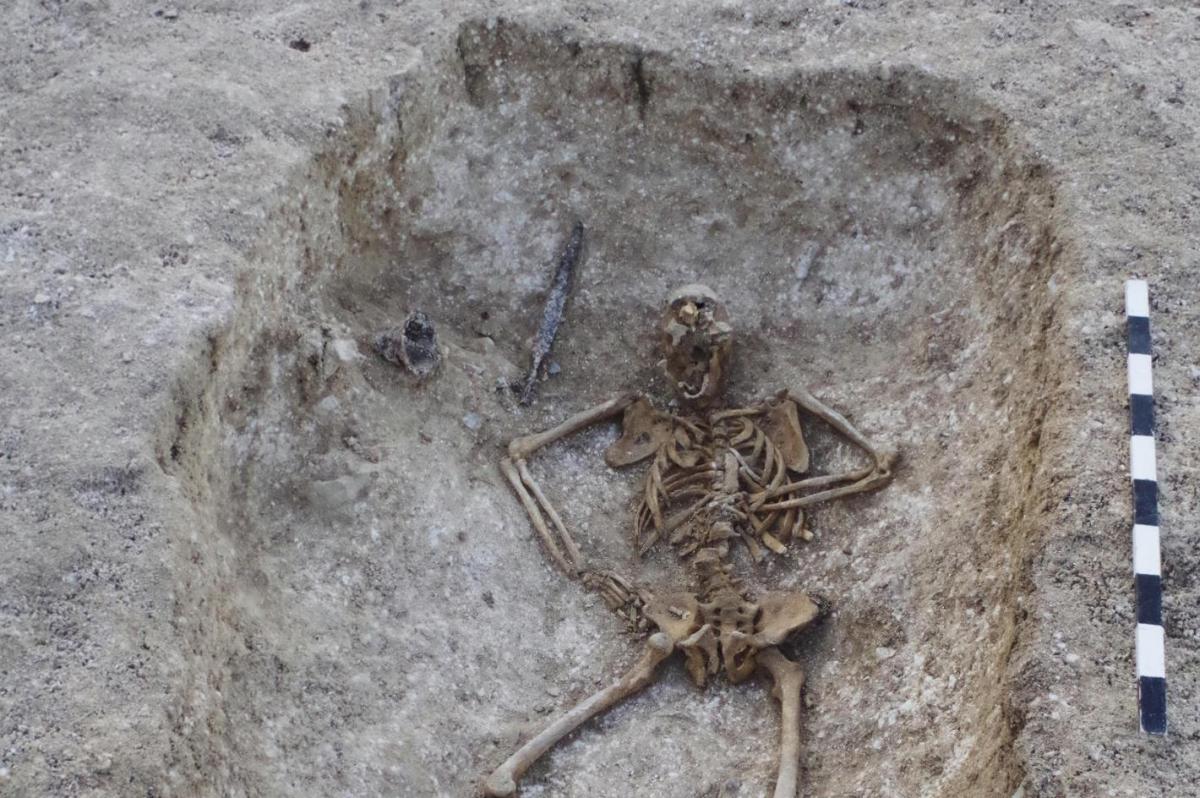New houses need to be built for Army families moving into the area.
Archaeologists need to check the land before the builders start building houses, to see if there is any evidence of people living on and using the land in the past; such as burials, buildings or evidence of them farming.


So far archaeologists have found:
- People during the Stone Age used the area around Bulford and Larkhill
- At Larkhill we have found evidence of people using the land during the Roman period
- At Bulford and Tidworth, we have found Anglo-Saxon cemeteries where people were buried with a range of weapons, tools and personal items
- We have also learnt that soldiers were training at Bulford and Larkhill before they went to fight in World War I. At Larkhill we have found practice trenches and tunnels used by soldiers before they went to fight abroad in War.
Incredible archaeology has been uncovered on Salisbury Plain since Wessex Archaeology was commissioned by WYG on behalf of the Defence Infrastructure Organisation (DIO) to carry out archaeological investigations ahead of development for the Army Basing Programme (ABP).
These works, which collectively involve an ambitious project to accommodate the 4000 additional service personnel and their families who will be based on and around Salisbury Plain by 2019, required excavations to the east of Larkhill Camp, on land to the south of Bulford, and to the east of Tedworth House between 2015 and 2017.


Aerial photograph captured by Rob Rawcliffe of FIDES Flare Media Ltd.
The Discoveries
The archaeological discoveries range from the Neolithic period (approximately 4000-2000 BC) to the Second World War (1939–1945).
The Neolithic discoveries are changing the way people view the development of the Stonehenge landscape. At Larkhill, a causewayed enclosure (so called because it is made up of a series of segments of ditch with causeways between them, which together define a sub-circular area) predates the sarsen stone circle at Stonehenge by 1000 years.
At Bulford, a later Neolithic ceremonial complex consisting of a unique double henge and an extensive scatter of pits containing a range of remarkable objects was uncovered.
At both Larkhill and Bulford, the Neolithic sites formed the foci for later prehistoric activity. Beaker and Bronze Age inhumation and cremation burials clustered around the causewayed enclosure and henges, and – at the Larkhill causewayed enclosure – a line of posts was erected that seems to point to the midwinter sunset.



Over 2000 years later, in the 7th century AD, the Anglo-Saxons began to bury their dead next to the Bulford henges. It is quite common for Saxon cemeteries to be located next to much older burial mounds, and at Bulford around 150 burials were discovered while to the north-east, at Tidworth, another Anglo-Saxon cemetery comprising 55 burials was uncovered.
Little seems to have happened at any of the ABP sites for many centuries after the Saxons had departed, with the areas reverting to agricultural land. Not until the onset of the First World War did anything happen which left any archaeological trace. At Larkhill, the largest known network of WWI practice trenches in the country has been uncovered, including a tunnel system containing graffiti which identifies over a 100 mainly Commonwealth soldiers who were being trained for trench warfare at the nearby Larkhill Camp.




